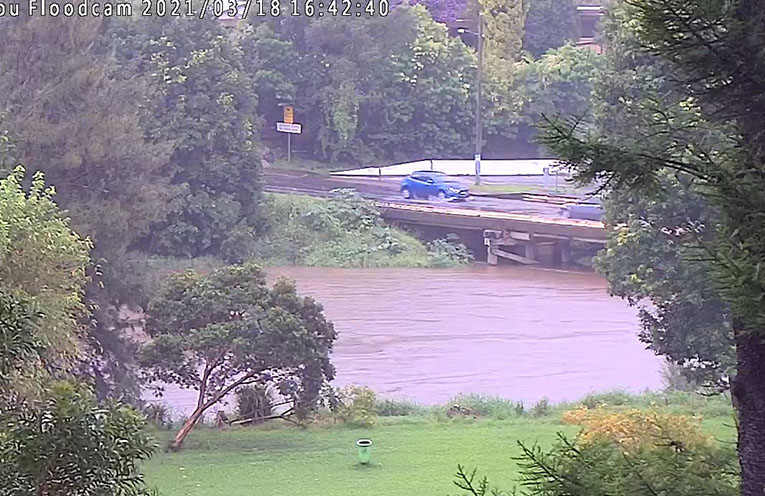
THE heavy rain, flooding and road closures have brought the community in the Coffs region together in true Australian spirit.
People across the Coffs region have been doing the right thing; helping neighbours and looking out for their community.
Local Bellingen businessman Kevin Doye, who owns Kombu health food store with his wife Lowanna said, “I am a passionate weather nerd and have put together a weather site called bellingenweather.org.
 Advertise with News of The Area today.
Advertise with News of The Area today.It’s worth it for your business.
Message us.
Phone us – (02) 4981 8882.
Email us – media@newsofthearea.com.au
“We worked with a local IT company to launch the Kombu floodcam page which has a feed from the other SES/Council Floodcams in Bellingen, so hopefully it’s a useful resource for the community.
“We’ve had 100,000 hits over a weekend during floods.
Mr Doye has also been doing his bit to support local producers through the wild weather the Coffs Coast has experienced.
“It’s been a hard time for local growers.
“Many of our local suppliers were hit by fires last year, and now by floods.
“It’s the Australian way but it doesn’t make it any easier.
“We work hard in store to support local growers where we can – for example the local Wednesday Farmers Market got rained off this week so we offered and took into store a heap of additional produce from growers,” said Kevin.
According to the Bureau of Meteorology (BoM), while La Niña has reached its peak and is now weakening, its influence is likely to persist into April, with outlooks indicating a wetter-than-average month for northern and eastern parts of Australia.
With soils and catchments saturated in many areas, more heavy rain could lead to more flooding.
Current flood watches and warnings can be found on BoM’s warnings page http://ow.ly/45j350E0OkB or on the #BOMWeather app
For Australia, La Niña typically means increased rainfall across much of the country as well as lower daytime temperatures.
La Niña occurs when equatorial trade winds become stronger, changing ocean surface currents and drawing cooler deep water up from below.
They can come back-to-back or with years in between.
There have been eighteen La Niña events (including multi-year events) since 1900.
By Andrea FERRARI

